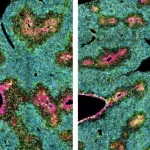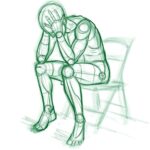Tokyo, Japan – A recent study published in the Journal of Epidemiology and Community Health has found no significant link between housing damage and all-cause mortality among survivors of the Great East Japan Earthquake (GEJE). Conducted by researchers from Tohoku University as part of the Tohoku Medical Megabank (TMM) Project, the study aims to shed light on the long-term health effects of natural disasters.
Study Overview
The GEJE, which struck on March 11, 2011, was one of the most devastating earthquakes in Japan’s history, followed by a massive tsunami that resulted in the deaths or disappearances of 22,318 people by March 2021. While previous studies have examined the immediate impact of such disasters, long-term research on survivors’ health outcomes has been limited.
To address this gap, the TMM Project conducted a cohort study in disaster-stricken areas from May 2013 to March 2016. The study involved over 59,000 participants and included extensive health assessments, such as questionnaires, blood and urine tests, and detailed medical examinations.
Key Findings
Using the Cox proportional hazards model, a statistical method that assesses survival times while considering multiple variables, researchers analyzed the relationship between housing damage and mortality. Their findings indicate that the extent of housing damage did not significantly affect the long-term survival of disaster survivors.
Lead researcher Naoki Nakaya, a professor at Tohoku University, explained that the absence of a direct link may be due to various factors, including timely public health interventions by local governments. “For instance, medical expenses were waived in disaster-affected areas, and access to healthcare was strengthened, which may have mitigated potential health risks,” Nakaya noted.
Limitations and Future Research
Despite its strengths, the study acknowledges several limitations. The assessment of housing damage was based on self-reported questionnaires, which could introduce recall bias. Additionally, since the survey began approximately two years after the earthquake, early deaths may not have been accounted for, potentially underestimating mortality risk.
Differences in follow-up methods between institutions, as well as changes in social and lifestyle factors over time, may also have influenced the results. Moreover, voluntary participation may have led to a healthier sample group, limiting the generalizability of the findings.
The researchers emphasize the need for continued long-term studies to explore the broader health impacts of natural disasters. Future investigations will focus on specific causes of death, including cardiometabolic diseases and mental health disorders, to gain a deeper understanding of the disaster’s effects on survivors.
Disclaimer: The findings of this study provide insights into the relationship between housing damage and mortality but do not rule out other health consequences of natural disasters. Further research is required to understand the full scope of disaster-related health risks.












